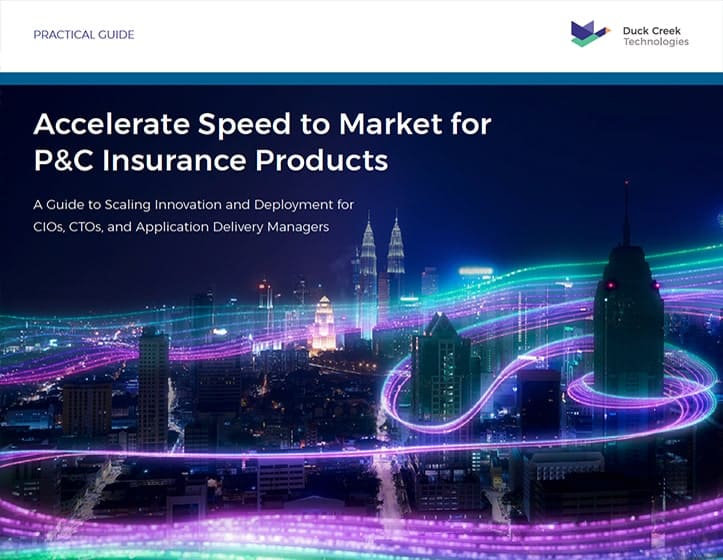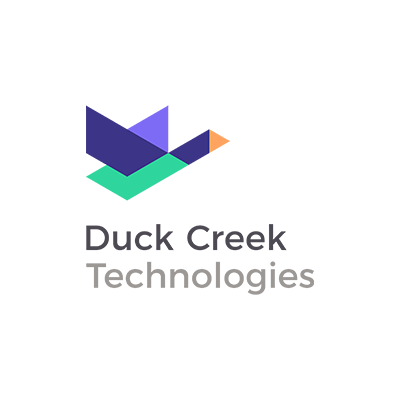Agentic AI represents the evolution from artificial intelligence (AI) as an assistant to AI as an independent, goal-driven performer. While traditional AI excels at emulating human intelligence through “thinking, learning, and creating,” it requires human interaction to translate those insights into action. Agentic AI elevates this efficiency with its ability to act autonomously – freeing human intelligence for more strategic tasks.
In fact, Gartner urges insurance organizations to understand this transformative force, its autonomous capabilities, and plan well for responsible adoption.
This blog unpacks the concepts of agentic AI, what it is, why it matters, and how it represents a change in thinking, unlocking unprecedented levels of autonomy and efficiency. If you’re ready to outmaneuver the competition, read on.
What is Agentic AI for Insurance?
Agentic AI is a type of AI that empowers systems to act autonomously – with human oversight where it matters most. If you’re thinking about chatbots, think again. A Chatbot provides answers – agentic AI provides answers and proactively handles the required manual tasks. In other words, chatbots react. Agentic AIs proactively act – with the ability to loop humans in for review, approval, or escalation as needed.
Agentic AI works by using Generative AI as it’s “brain” or “reasoning engine.” It breaks a goal into sub-tasks, deciding what needs to be done for each task and how to do it. For example, helping a carrier proactively respond to natural catastrophe (CAT) events by taking actions to coordinate a response – and surfacing high-risk decisions for human review.
What are AI Agents?
Each agent is designed to act independently and purposefully to achieve a specific goal. That’s where the name comes from: “agentic” referring to their “agency,” or ability to achieve a specific goal. Where a chatbot is a very smart reference book, an AI Agent is a highly capable personal assistant or project manager.
AI agents continuously synthesize signals from across the ecosystem to surface the right information and handle tasks on behalf of their human teammates. By combining speed and scale with expert judgement, AI agents help carriers stay proactive, responsive, and efficient in moments that matter most.
Agentic AI: The Future of AI in Insurance
Predictive modeling and machine learning have been used in the insurance industry to support decision-making.
The AI landscape is evolving at an unprecedented pace, with Generative AI having already revolutionized content creation and information synthesis. However, the true frontier lies in the next wave of innovation: agentic AI. The following chart illustrates this crucial progression, highlighting how AI capabilities are moving beyond mere generation towards sophisticated, autonomous action and proactive problem-solving.
| Generative AI (The Creator) | Agentic AI (The Autonomous Doer) | |
|---|---|---|
| Core Functions | Generates new content based on learned patterns. | Plans and executes multi-step tasks and learning to achieve specific goals. |
| How It Works | Pattern recognition, synthesis, and generating output based on training data. | Gathering data from various sources, interpreting goals and strategizing action, orchestrating other tools to execute tasks, taking actions, and continuously refining its approach. |
| Business Value | Efficient content production, creativity, and personalization. | Drives process and workflow outcomes autonomously with a human-in-the-loop for review and confirmation. |
| Insurance Examples | Summarization of documents, power chatbots with natural language, generate/tailor content/messages. | Automated claims processing, real-time risk assessment, proactive fraud detection. |
How Manual Processes Drain P&C Insurance Profits
The daily grind of manual tasks, paperwork, legacy systems, keeping up with customer demands, and market shifts is a typical day in P&C insurance. While digitization and traditional automation have improved parts of the insurance workflow, other parts stay stubbornly manual, repetitive, and time-consuming.
This creates a ripple effect of inefficiencies, increased costs, and diminished customer experiences. Not the best position when you’re trying to differentiate in a crowded market and grow a base of digitally native customers.
How do these manual operations affect the bottom line? Here are just a few ways inefficiencies accumulate across the insurance experience:
- Slow Claims Processing: Lengthy review, manual data entry, human error. Research reports that poor claims experiences could put up to $170B in global insurance premiums at risk by 2027 (Accenture).
- Inefficient Underwriting: Manual data gathering, complex risk assessment, slow policy issuance. McKinsey estimates underwriters spend 30-40% of their time on administrative tasks like re-keying data.
- Delays and Bottlenecks: Delayed quote-to-bind, protracted claims cycles, reduced scalability. As business volume grows, carriers must hire more staff or face severe backlogs that limit profitability.
- Stifled Innovation: Slow time-to-market. It is hard to grow when it is time-consuming and expensive to launch new products or adapt to existing ones.
- Increased Risk: Manual tracking and lack of audit trials. Failure to keep up with constantly evolving regulations and compliance is a problem.
- Attrition and Churn: When carriers bear higher costs and expose themselves to greater risks, customers endure frustrating, slow, and inconsistent experiences.
- Higher Costs: Manual, redundant, and labor-intensive processes don’t just waste resources – they are a silent profit drain, inflating operational costs and error rates.
Benefits of Agentic AI for P&C Carriers
For insurance carriers, autonomous AI in the form of agents is not just a technological upgrade; it is a strategic lever that drives fundamental improvements across the entire enterprise. By automating complex, goal-driven workflows, it addresses the pains of manual operations and propels carriers into a new era of competitive advantage.
Ready to transform how work gets done and customers are served? Ready for a definitive competitive edge? Implementing agentic AI in insurance can:
- Reduce Costs and Enhance Profitability: Tackle labor costs, rework, and claims leakage head-on and streamline operations and expense ratios.
- Accelerate Options and Speed-to-Market: Cut bottlenecks and delays – and quote in minutes and launch new products in weeks, not months.
- Improve Customer Experience (CX) and Loyalty: Deliver proactive, personalized, customer journeys – and significantly boost retention rates.
- Enhance Underwriting Accuracy and Profitable Growth: Transform risk assessment from static to dynamic – and gain pricing precision.
- Improve Data Utilization and Actionable Intelligence: Ditch fragmented data and info silos for autonomous aggregation and analysis – and better decision-making.
- Future Proof with Agility and Scalability: Adapt to spikes in demand with your same staff – especially when CAT events drive claims processing surges.
- Strengthen Compliance and Resilience: Continuously and proactively oversee operations – and reduce regulatory exposure and fraud loss.
- Empower Employees and Strategic Focus: Liberate experts from repetitive, administrative tasks – and focus on complex problem-solving and strategic initiatives.
- Ensure Human Oversight and Control: Nothing proceeds without humans in control. These professionals remain the ultimate decision-makers, focusing their invaluable expertise, empathy, and strategic judgment on complex cases.
Future of P&C Insurance Technology
The question for P&C insurance carriers is no longer if agentic AI reshapes the industry, but when it becomes a competitive imperative. While the promise of agentic AI is immense, realizing its full value requires timely adoption – those who wait risk falling behind and missing out on the meaningful gains to the bottom line.
In fact, a recent survey on GenAI in insurance by Celent revealed that 22% of insurers plan to have an agentic AI solution in place by the end of 2026.
Don’t let your competitors seize the future of P&C insurance while you’re still stuck in the past. The era of true operational autonomy is here, and carriers who hesitate risk being left behind.
Beyond Catastrophe Modeling: How Agentic AI Helps P&C Carriers Respond Faster






